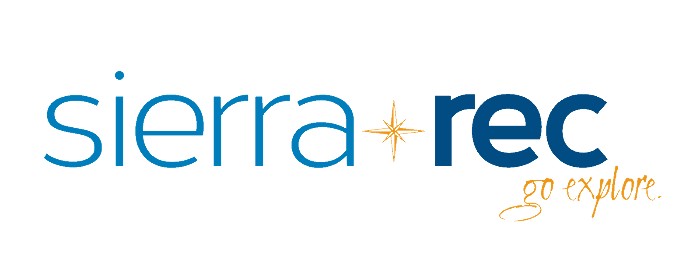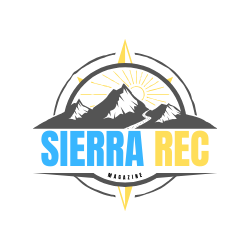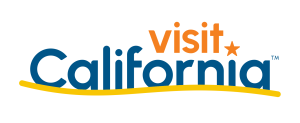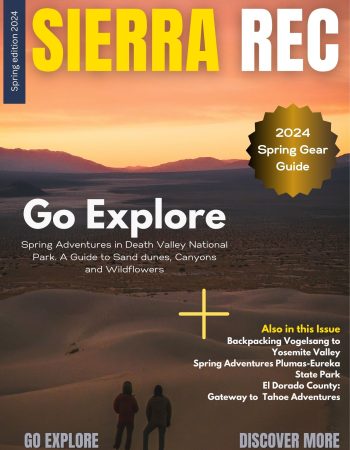Auburn State Recreation Area
Auburn State Recreation Area– In the heart of the gold country, the Auburn State Recreation Area (Auburn SRA) covers 40-miles of the North and Middle Forks of the American river. Once teeming with thousands of gold miners, the area is now a natural area offering a wide variety of recreation opportunities to over 900,000 visitors a year.
Major recreational uses include trail running, hiking, swimming, boating, fishing, camping, mountain biking, gold panning, horseback riding, road bicycling, and off-highway motorcycle riding. Whitewater recreation is also very popular on both forks of the river, with Class II, III and IV runs.
Trails — More than 100 miles of mountain biking, hiking, and equestrian trails cross the steep canyons and both forks of the American River. About 20 miles of the Western States Trail pass through the park; this trail hosts the world renowned Tevis Cup 100-mile Endurance Horse Ride and the annual Western
States 100 Endurance Run

American Canon Trail
American Canyon Trail- This steep trail has everything needed for a great day of exploration: rugged mountain canyons, a beautiful stream with waterfalls, a wide variety of plant and animal life, gold rush era history, and panoramic views of the Middle Fork American River. This is an excellent hike for bird lovers and picture takers – even artists with drawing pads and paint boxes. Remember your binoculars, camera, sunscreen, water and a lunch to enjoy while you savor the scenery.
The American Canyon Trail is densely treed along the first half, mostly with various species of oak and pine. Laurel and blackberry bushes can also be found along most of the trail. Ankle high poison oak creeps onto many parts of the trail, so please use caution. After the first mile, the trail gets more sunlight and will be hot in the summer – early morning use is recommended. About ¾ miles from the trailhead, the trail joins the historic Western States Trail (WST) for a short distance. Take a right at the first trail intersection with the WST, and go straight at the next intersection to stay on the American Canyon Trail.
Just past the 1 mile point, the trail crosses American Canyon Creek, followed shortly thereafter by Hoboken Creek. The confluence of these creeks, just downstream from the trail, offers a beautiful place to cool off.
The terrain levels out at the site of a historic gold rush town, once home to thousands of miners but now almost completely reclaimed by Mother Nature. To reach the site of this old mining town, turn right after crossing Hoboken Creek and hike off-trail for about ¼ mile upstream. The site is across the creek. Returning to the main trail, if you look closely, you may spot a 30-foot high rock dam, hidden behind a pile of tailings, which was built by hand during the gold rush.
About 1¾ miles from the trailhead, a small, very steep unmarked side trail on the left leads down to some very nice falls and a great pool where you can escape the heat on hot summer days.
Use caution while climbing on the wet, slippery rocks. This side trail to the falls is just a few feet before the intersection with Dead Truck Trail on the right.
After the intersection with Dead Truck Trail, the path becomes very steep, dropping 600 feet in less than ¾ miles on its way to Poverty Bar on the Middle Fork American River.
Did You Know? – The Western States Trail
(WST) originally stretched from Sacramento to
Utah. The Sierra Crest portion of the trail, blazed
by Paiute and Washoe Indians and later used by
miners, is now the route of two world-famous
endurance races: the Tevis Cup Ride for
equestrians, and the Wes-tern States 100-mile
Endurance Run. Both races begin before dawn
at Squaw Valley in the Lake Tahoe Basin and
end in Auburn after nightfall, traversing roughly
one hundred miles.
This part of the WST (from Ruck-A-Chucky
campgrounds to the Route 49 crossing) is different for runners and equestrians. Endurance
runners hug the canyon wall on a narrow, winding trail about 600 feet above the river, while
Tevis Cup riders take a wider, flatter trail closer
to the river, following the route prospectors used
to get from bar to bar along the river. The
American Canyon Trail crosses the higher WST
for runners and ends at the lower WST where
Tevis Cup riders cross the river at Poverty Bar.
Clarks Hole Trail
Clarks Hole Trail – This is a great family hike to a large, deep swimming hole on the North Fork American River, upriver of the confluence. In the early 1900s, Clarks Hole (also called Clarks Pool) was managed by the City of Auburn as a municipal swimming pool, complete with concession stands and lifeguards. Today, it is still popular with Auburn locals for picnics and swim parties, although there are no lifeguards.
Trailhead is 1¾ miles south of ASRA Park headquarters. Take Hwy 49 south to Old Foresthill Road at the bottom of the canyon. Continue straight for ¼ mile and park on the left. Trailhead is just beyond the parking area at the green gate (#137).
Beacroft Trail
Beacroft Trail – The Beacroft trail is 2.36 miles long. It begins at Forest Road 88-036 off of Foresthill Divide and ends at the American River Trail. The trail is open for the following uses: Hiking
This is a very steep and difficult trail, which involves numerous switchbacks. As you start down the trail, you will cross the Iowa Hill ditch. Further on you will see clusters of ferns beside the small streams. At the bottom of the trail at the river, you may continue upstream toward Sailor Flat, or downstream towards Mumford Bar on the American River Trail. Good fishing is available at times and limited camping is available along the trail. Campfire permits are required for campfires, backpacking stoves, BBQs and lanterns
Elevation: 5463 to 2870 feet
Cardiac Hill
Cardiac Hill Trail a 3.7 mile out and back trail. with 850 ft elevation change. The hike starts off flat along a connector path by a drainage canal before a steep descent to the river in a series of cutbacks. The river views at the bottom are worth it and there is a picnic table. It’s easy to go along the rocks to the rivers edge. The hike back up is a bit of a scramble, especially if it’s rained recently. It’s a great workout. This trail lives up to its name in getting your heart rate up! If you bring your dog, be aware that they will need to be somewhat agile.
Middle Fork American River Quarry Trail
Middle Fork American River Quarry Trail is a 10.8 mile heavily trafficked out and back trail that traverses 1250 ft elevation change. Walk along the river where the historic railway once traveled and end up at a stunning amphitheater of carved limestone This great hike along the Middle Fork of the American River ends in a spectacular amphitheater of sheer limestone walls rising around you. Enjoy the natural beauty of the American river canyon and also pass by an enormous cave that was the site of both paleontologic excavations and more mining activities. Learn about the plants and animals present today in the canyon environment as well as the mining history of the region. The trail is wide and smooth (some people even push baby strollers on it) and is mostly level in grade with the exception of the last bit up to the quarry. The trail follows the path of the old railway that was used to carry out the limestone. When it existed, the railway had standard gauge sized tracks and the cars were actually backed down the path 4 times daily to be filled with limestone and taken 7 miles to Auburn for cement production. In 1942 the railroad tracks were taken out for scrap iron for WWII.
For More Information: American River Ranger District
Driving Directions to Auburn SRA
The park (which is 20 miles long on two forks of the American River) is situated south of Interstate 80, stretching from Auburn to Colfax. The main access is from Auburn, either on Highway 49 or the Auburn-Foresthill Road.
Gold Panning Regulations
The Auburn SRA allows gold panning using the “hands and pans” method. Please abide by the following regulations when collecting minerals:
Panning for gold is considered to be “rockhounding” as the term is applied in the Department. The goldpan is the only exception permitted to the exclusion of tools from rockhounding in a unit (T-14 CCR 4611 (i))
Rockhounding is the recreational gathering of stones and minerals found occurring naturally on the undisturbed surface of the land, including panning for gold in the natural water-washed gravel beds of streams (T-14 CCR 4301(v)).
Tools and equipment may not be used in rockhounding, except gold pans. Rocks or minerals gathered may not be sold or used commercially for the production of profit. One person may gather no more than 15 pounds of mineral material per day. Historic and prehistoric or archeological specimens may not be gathered. In state recreation areas rockhounding is limited to beaches which lie within the jurisdiction of the Department and within the wave action zone on lakes, bays, reservoirs, or on the ocean, and to the beaches or gravel bars which are subject to annual flooding on streams. Rockhounding is limited to within the wave action zones of lakes and streams. Muddy water from panning must not be visible more than 20 feet from the panning operation (T-14 CCR 4307, 4308, & 4611).
If you have any questions, please call the Auburn SRA office for more information.
Camping
Three primitive campgrounds have no flush toilets, showers, or drinking water.
Mineral Bar Campground
Starting May 1st, 2021, Mineral Bar will require reservations to camp. It will no longer be a first come first serve campground from May 1st to September 15th. To make reservations please visit www.ReserveCalifornia.com https://reservecalifornia.com/CaliforniaWebHome/.
— A narrow, paved road leads to 17 campsites on the east side of the North Fork, off Iowa Hill Road.
Ruck-A-Chucky Campground
— A 2.5-mile gravel/dirt road takes you to five primitive first-come, first-served sites on the Placer County side of the Middle Fork (Driver’s
Flat Road).
Lake Clementine Boat-in Campground
Twenty primitive sites, reachable only by boat, have no vehicle access. Make reservations at
(800) 444-7275 or visit www.parks.ca.gov.
River Permit Camping
Some areas outside of designated campgrounds are available for camping by special permit. Get information
and permits at the Auburn SRA office. River camping permits are not available between
July 1 and October 15
China Bar Vehicle Access
Beginning January 4th, 2022 China Bar will be open to vehicle access 7 days per week. Previously the area was open to vehicular access Friday through Monday year round. Birdsall Road and Oregon Bar Road will no longer be subject to wet weather closures and will be open year round.
Rockhounding is the recreational gathering of stones and minerals found occurring naturally on the undisturbed surface of the land, including panning for gold in the natural water-washed gravel beds of streams (T-14 CCR 4301(v)).




